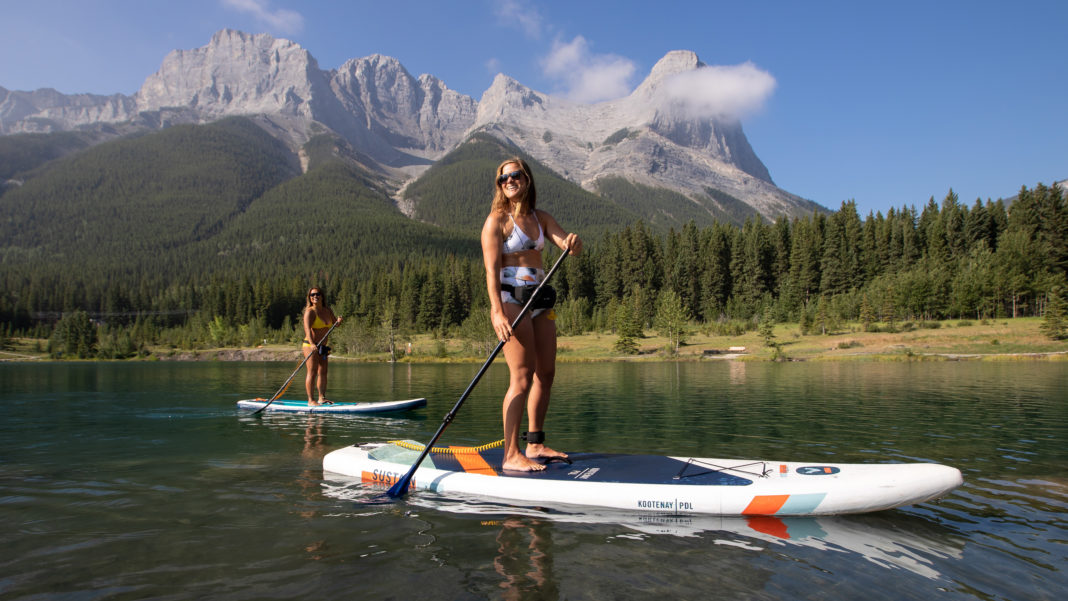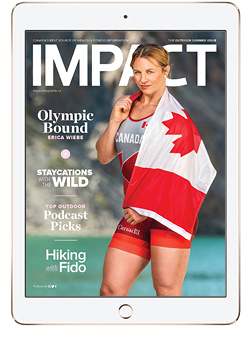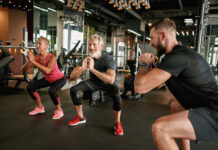Stand-up paddleboarding (SUP) is an incredible sport that’s easily accessible at any age or skill level and can be done on most bodies of water.
In Canada, SUP is most commonly seen on lakes, around beaches and at cottages and cabins mostly to cruise, socialize, sunbathe, swim from, and for fitness. Many people are also starting to use their SUPs like canoes and kayaks, as a method to tour around on multi-day trips.
The accessibility with a SUP is awesome as it can take you to special places and allow you to see things from different perspectives. When it’s hot, a SUP can be easily used as a diving platform. You can stand and paddle hard if you wish to get a sweat on and then lie down and rest as you please.
For training, I use a narrow and light race board for speed and a great workout, but am also a big fan of inflatable SUP boards. The adventures and accessibility offered by an inflatable SUP are endless.
I enjoy bringing an inflatable SUP with me on canoe trips, on planes, on hikes, and even towed on a bike trailer. My kids love them as they’re softer to fall on and I don’t have to worry about durability if they bump into something.
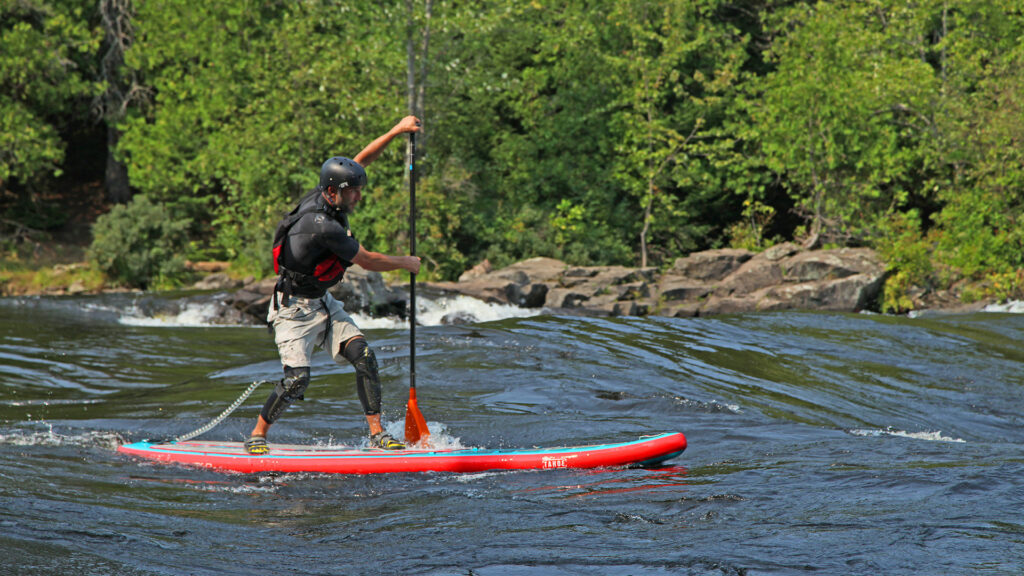
Inflatables can be packed up and taken on a hike up to a mountain alpine lake if you have the stamina. Your reward will be enjoying the views from the middle of the lake. It’s incredibly freeing and magical. Or, you could cruise down a meandering river on a float with friends and choose to paddle, stand, kneel, sit or lie down.
For those with access to the coast, how about hitting the ocean on a calm day when you can enjoy the underwater world seen from a standing perspective, or the thrill of surfing some waves and challenging yourself in the chop.
The community that surrounds the sport of SUP is one of acceptance, giving, and encouragement. I encourage you to seek out other SUP lovers and go out and explore the possibilities.
Before you head out on the water, be sure to take appropriate courses and learn the skills and the safety measures needed to return home with stories to share and memories to hold. Also if possible, check out your local SUP shop for upcoming clinics, courses, and events.
Always remember to stay safe, have a plan, tell someone your plan, know your limits, check the weather, wear and have the correct safety gear and of course, have fun out there.
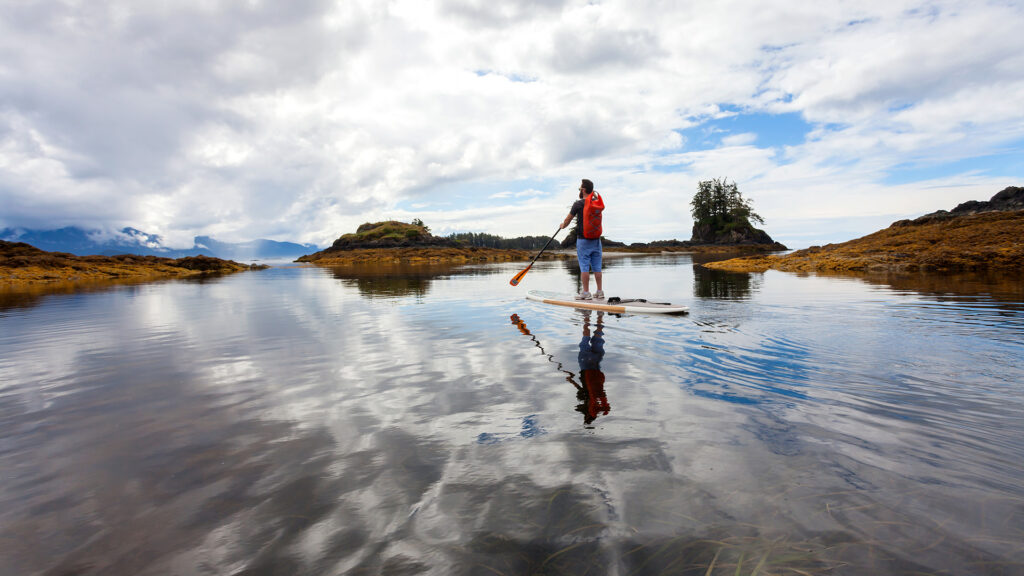
Where to SUP?
British Columbia
Surf the various surf breaks in Tofino, and explore the coastal waters such as the Broken Group Islands where the touring possibilities are endless.
Discover the many lakes of the Okanagan Valley, including Kalamalka Lake in Coldstream – my home. These beautiful lakes are perfect for flatwater paddling. You can enjoy mellow day paddles or go for a tour and explore further. Paddling can be easily combined with other local activities including mountain biking, hiking, or wine touring.
Deep Cove in North Vancouver offers a nice variety of waters to paddle from flatwater to choppy ocean with currents and tides. There are some nice destination campsites such as Twin Lakes and Granite Falls or you can enjoy the afternoon paddling around the various islands and explore the coastal environment.
Alberta
Start your river run on the Upper Kananaskis River downstream from Widowmaker rapid for whitewater fun. Be prepared and knowledgeable with whitewater paddling–it is always best to take a course before heading out on a river.
Moraine Lake and Lake Louise both have picturesque views and are cold but beautiful lakes. Plan to arrive early (or later in the afternoon) to score a parking spot.
Quarry Lake near Canmore is popular among locals and has easy access. You could also try the nearby Canmore Reservoir, which is just up the road on the way to the Canmore Nordic Centre. The beautiful Ha-Ling Peak towers over the reservoir’s turquoise waters.
Calgary’s Bow River provides numerous entry and exit points for a fun float through the city. Popular access points include Bowness Park, Prince’s Island, Shouldice Park and Edworthy Park. You could also work on your slalom skills at the south channel of Harvie Passage, accessible from Pearce Estate Park.
Ontario
Paddle around Toronto Island. The lake can be flat but you can expect choppy water as well. Enjoy the picturesque views of the big city’s skyline and parks from the water.
Algonquin Park is a great destination for SUP touring. Choose one of the many established routes in the park and pack your board for a multi-day tour.
The Ottawa River Valley offers options for all abilities, from flatwater lakes and estuaries to whitewater rapids.
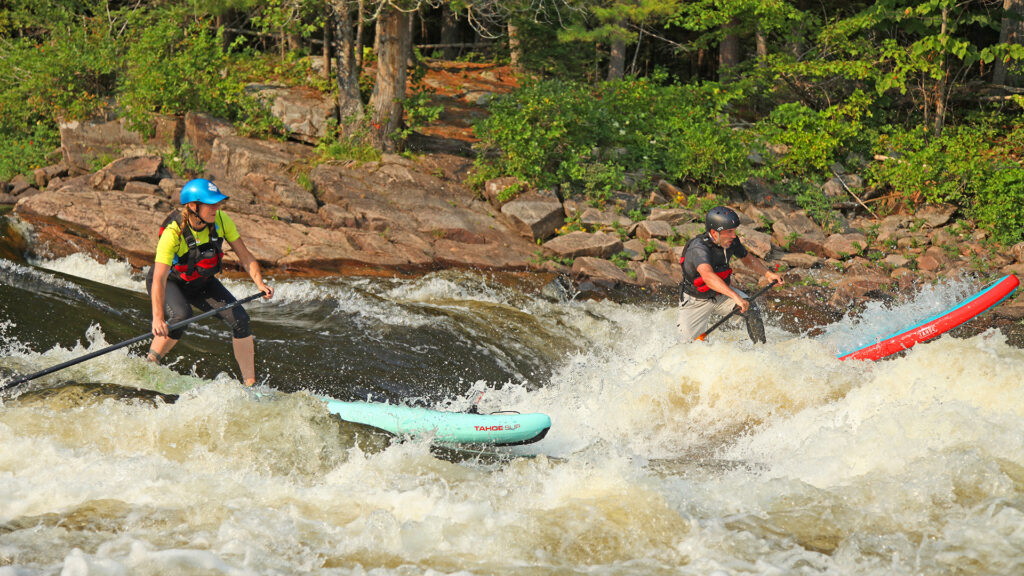
Recommended Gear
The Basics
Your board, paddle, fin, and safety gear. At a minimum, I don’t leave the shore without a PFD, a signaling device (whistle) and a board leash.
If you own an inflatable SUP, don’t forget your pump and all its parts. It’s also a good idea to have some repair kit with you (usually comes with the board.)
SUP Touring
Gear can vary depending on location, length, type of water, etc. In addition to the standard safety gear and paddling gear I have listed some basics to get you started. I have toured both on inflatable and hard boards. The type of board is dictated by the style of tour and transport to and from. It is always a great choice to take a course or consult someone with local experience before heading out and to do your research on the area you are exploring.
Additional gear for touring: first aid kit, navigation (ie: map, compass, GPS), extra water/clothes/food, fire starter, signaling device (ie: whistle, phone, Spot tracker, VHF radio), knife, sun protection, shelter (bivy or survival bag), repair kit, extra paddle, waterproof bag to put it in and a way to secure your things to the board (eg. tie-downs and bungee cord).
River SUP
Having the right gear will set you up for success on the river. Rivers have unique risks, and can be intimidating but also exhilarating. This list is not extensive but offers a good starting point and if you are serious about learning to river SUP, I highly recommend taking a course to learn more about river safety and river skills.
River SUP gear: An inflatable SUP can be a good choice for rivers, a detachable coiled quick release leash, PFD, helmet, often a drysuit or wetsuit and close-toed shoes, durable paddle, drybag with emergency gear. Always paddle with friends.
Feature Photo by Katie Goldie
Read This Story in Our Outdoor Summer Digital Edition
Get outside and play!
We’ve covered DIY Bike Maintenance, Wildlife Travel, Open Water Swimming, Ultramarathon Training, Paddleboarding, Family Adventures, and Dogs and a Cat to watch on Instagram! Work out with Canada’s Top Fitness Instructors and be inspired by our Athletes with IMPACT.

